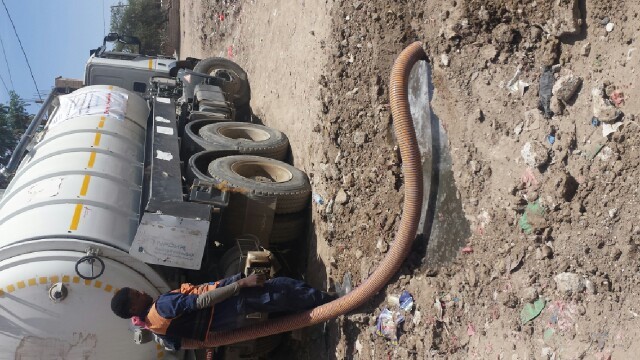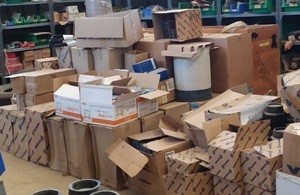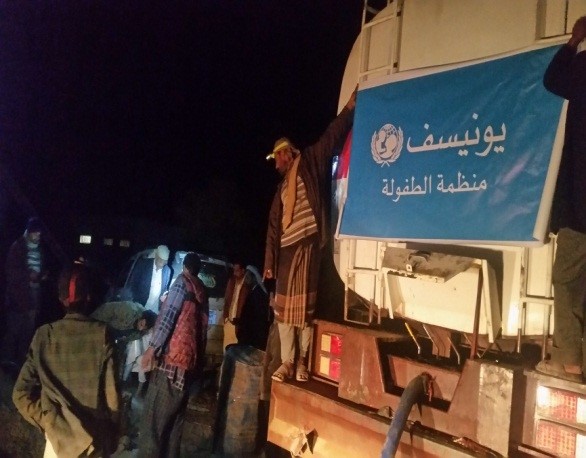
FUND RAISING
Facing the great challenges and implications of the war, many water utilities (e.g. Al-Hudaydah, Al-Baydha, Thamar, and others) formed dedicated teams (units) to facilitate obtaining donor funds. The teams prepared project proposals and asked donor organizations for support to meet urgent needs related to the restoration, operation and maintenance of water and sanitation services. This approach contributed to ranking the water sector among the donors’ top priorities and allowed to take advantage of the flexibility of humanitarian support procedures to provide vital equipment such as: solar panels, pumps, spare parts, leak detection equipment, and financial support for purchasing fuel. This support has been crucial to keep providing water and sanitation services during the multiple crises related to the war.
Description of the problem
The war has had a devastating effect on water utilities. Problems included: the cut of public electricity, high fuel prices, and destruction of part of the system such as pumping stations, reservoirs, and water pipes. The war also complicated the purchase of spare parts and vital equipment among others for rehabilitating wells and pumps. As a result utilities had to dramatically cut their service levels which in turn led to a considerable drop in income. The increased cost and reduced income affected the financial balance to such an extent that salary payments to employees were interrupted. This had a very negative impact on the work environment which lead to a further deterioration in the service level. The persistence of these conditions for a long time forced utilities into a spiral of losses beyond recuperation. Hence they were forced to explore options to break out of this spiral and resume water production and salary payment.
Description of the good practice
The utilities prepared studies of the emergency needs and based on these findings developed proposals to overcome the problems to provide safe drinking water to all, including the Internally Displaced People (IDP). These proposals were used to seek financial support from local authorities, international organizations, and the private sector. Specific activities in the process include:
- Reviewing the most affected components in the system (pipelines, pumps, appurtenances, and reservoirs) and identification of the necessary repairs to show the donors the emergency needs of the water and sanitation sector.
- Forming a team to prepare financial and technical proposals and to contact (and give follow-up to) donor organizations. Teams prepared a master matrix of projects for organizations such as UNICEF, Oxfam, Red Cross, GIZ, and Social Fund for Development. Proposals included short-term and medium-term emergency support for fuel supply, critical equipment and materials, and support for water quality monitoring and control, including the provision of laboratory equipment and materials.
- Teams also involved the local community and local authorities and private sector in addressing the new challenges and the lack of funds.
Impact and sustainability of the good practice
- The considerable support from donors and from local government made it possible to resume the water and sanitation services to households but with limitations. Still this is more reliable and sustainable than the emergency alternative of fetching water from tanker filled street tanks provided by the humanitarian sector.
- The support made it possible for the water utilities to pay salaries and incentives to their employees and to obtain the necessary spare parts, fuel, and equipment.
- The flexibility of humanitarian funds made it possible to obtain support for a diversity of activities to resume the services (Figure 1), including improving service levels, enhancing leak detection and control and strengthening staff capacity through specific training activities.
- Vital interventions included: use of solar energy, network expansions, awareness campaigns, constructing new wells, purchasing diesel generators, and covering O&M of sewerage networks.
- The support however is not sustainable in the long run. Utilities need to shift from crisis management with external emergency support to gradually regaining self-reliance by improving performance, increasing revenues and enhancing efficiency.
Required resources
This practice requires:
- A good overview of the problems of the water and sewerage services properly documented and supported by pictures to be able to clearly convey the problems and emergency needs to potential donors.
- Financial resources and staff capable to write good proposals. It is convenient to establish a team that is in charge of external fund raising and can communicate with potential donors.
- Project teams that can supervise / implement the projects that receive funding; this includes providing good monitoring and adequate reporting.


